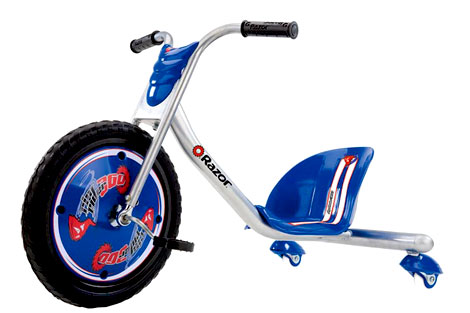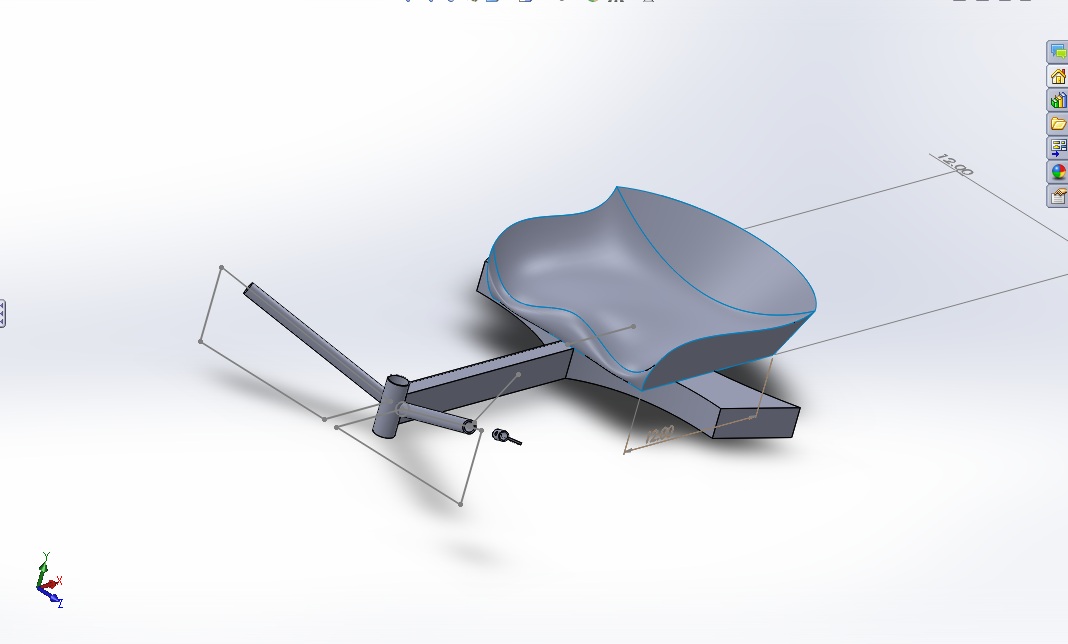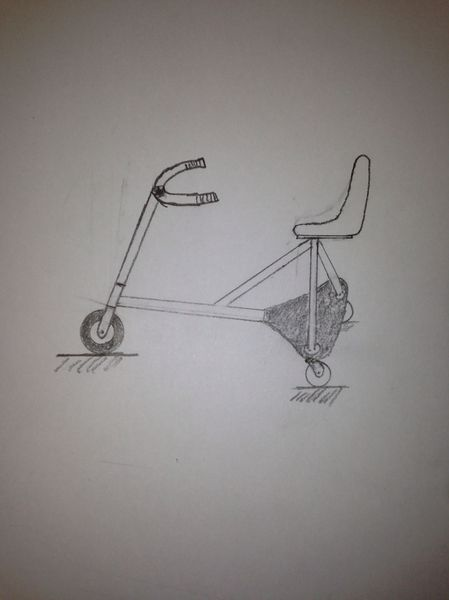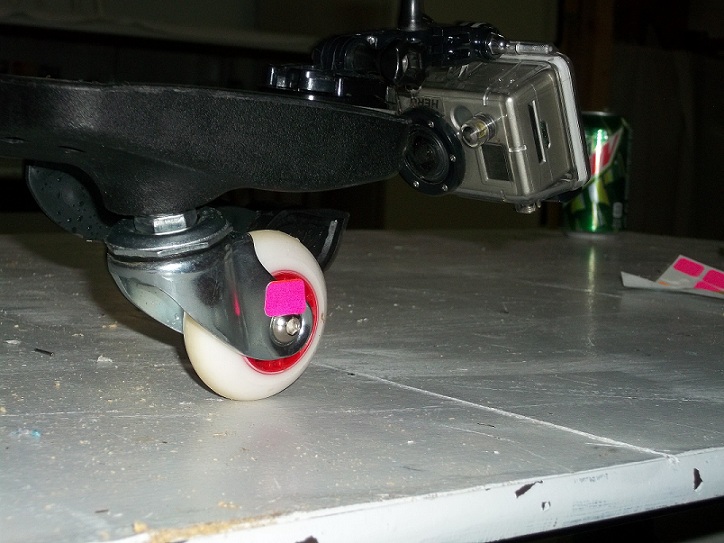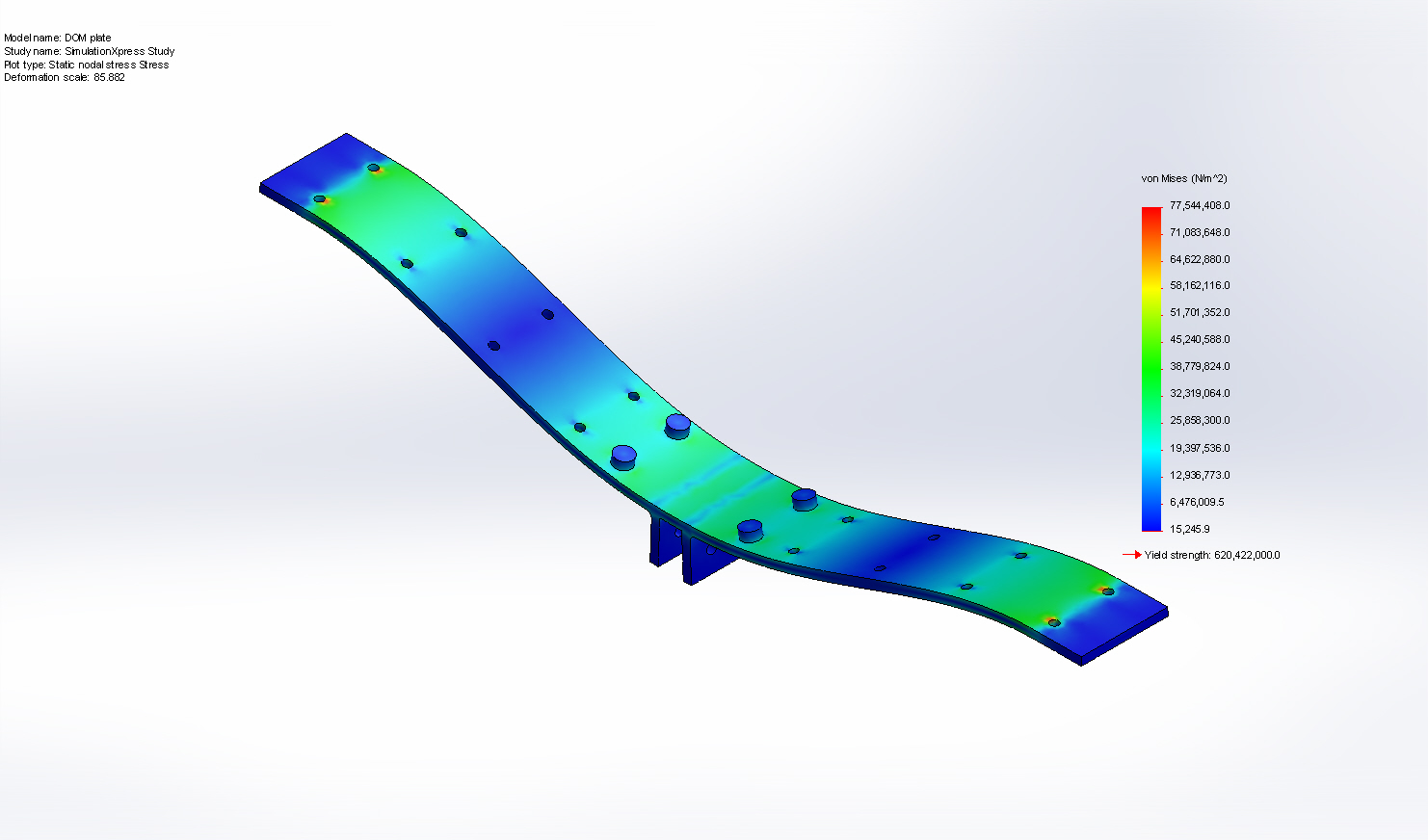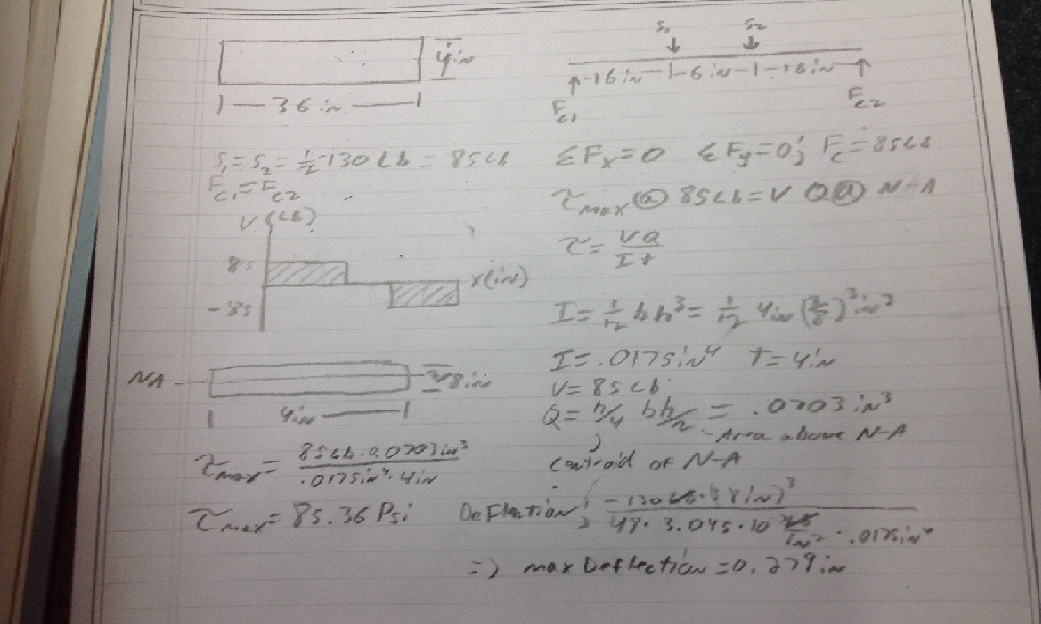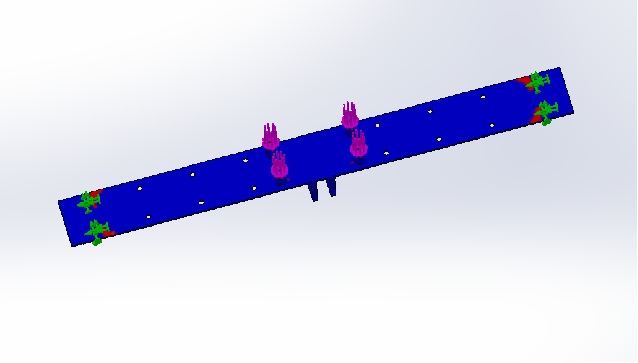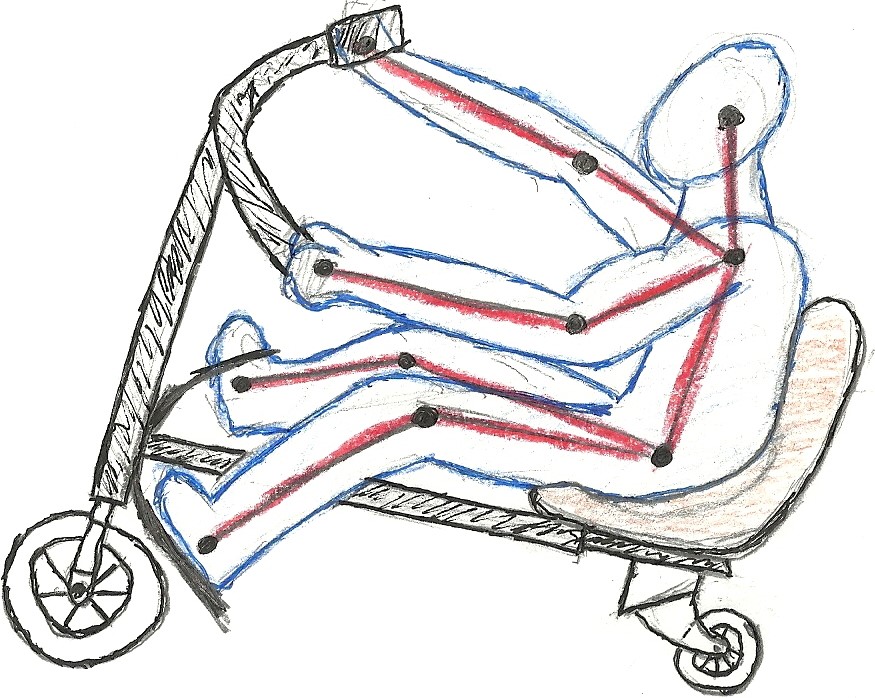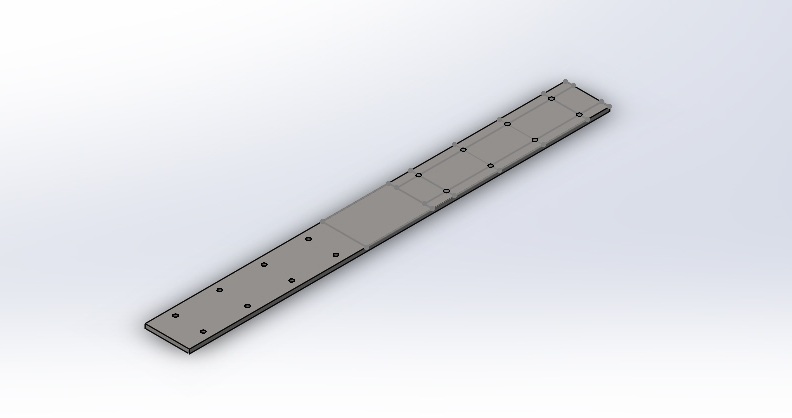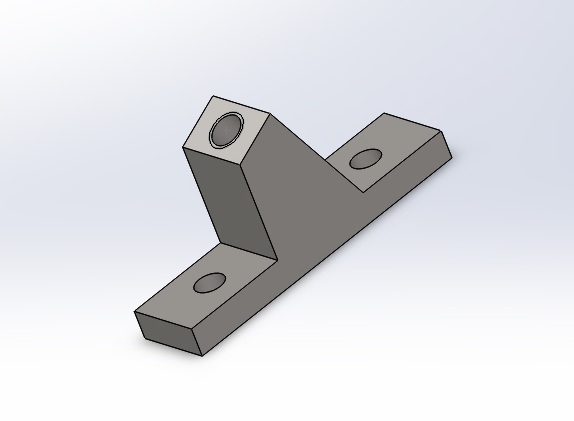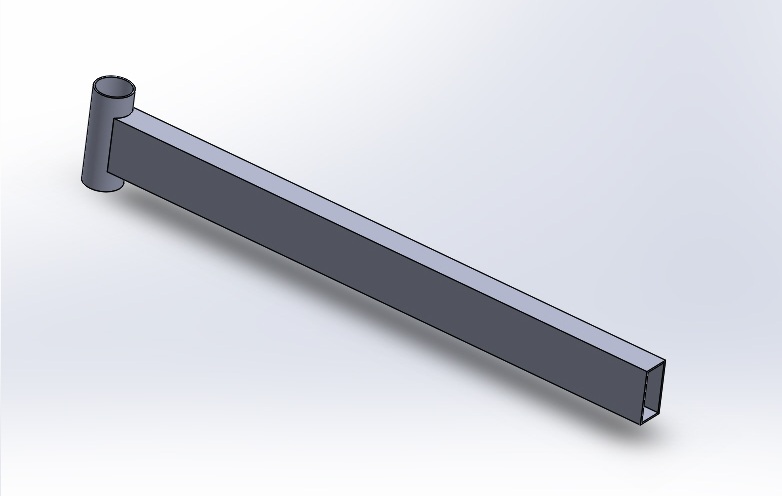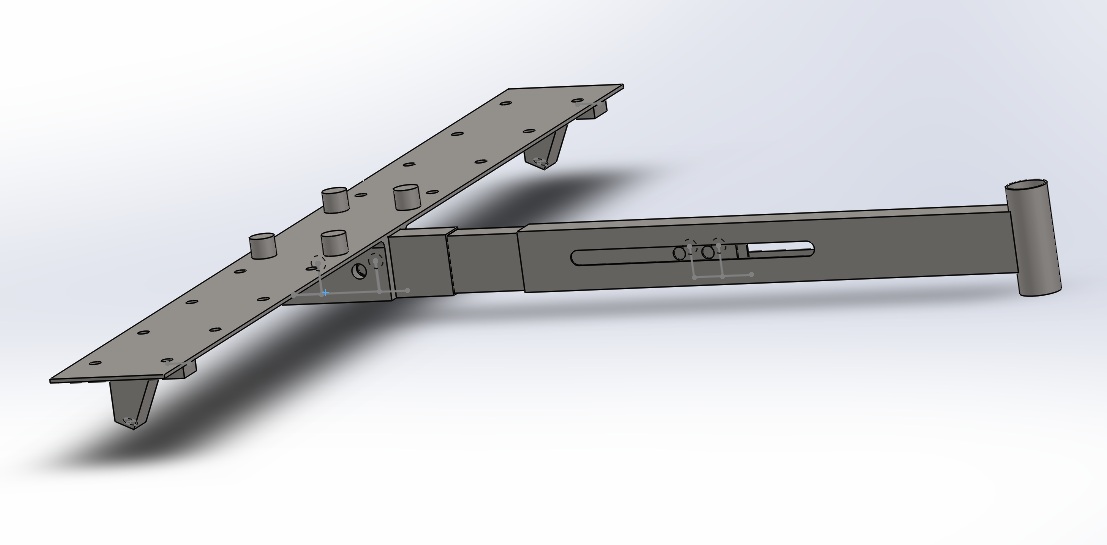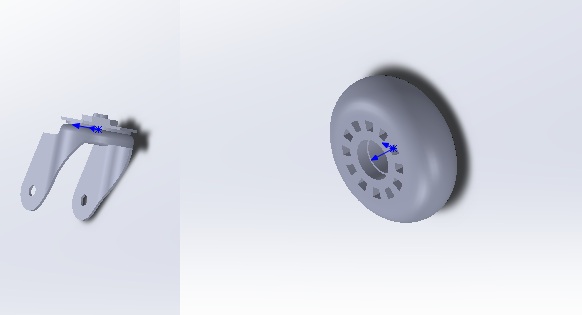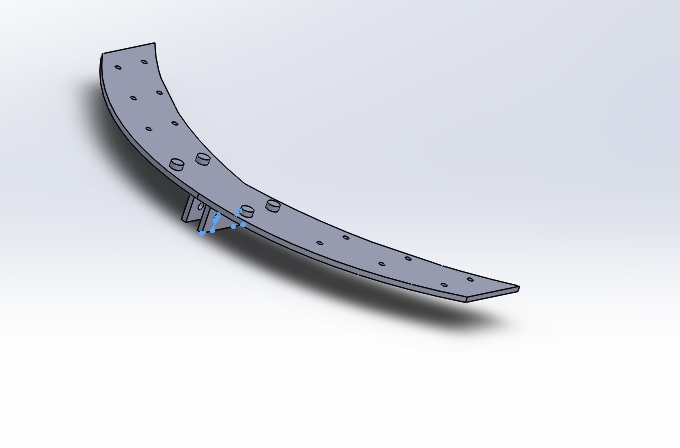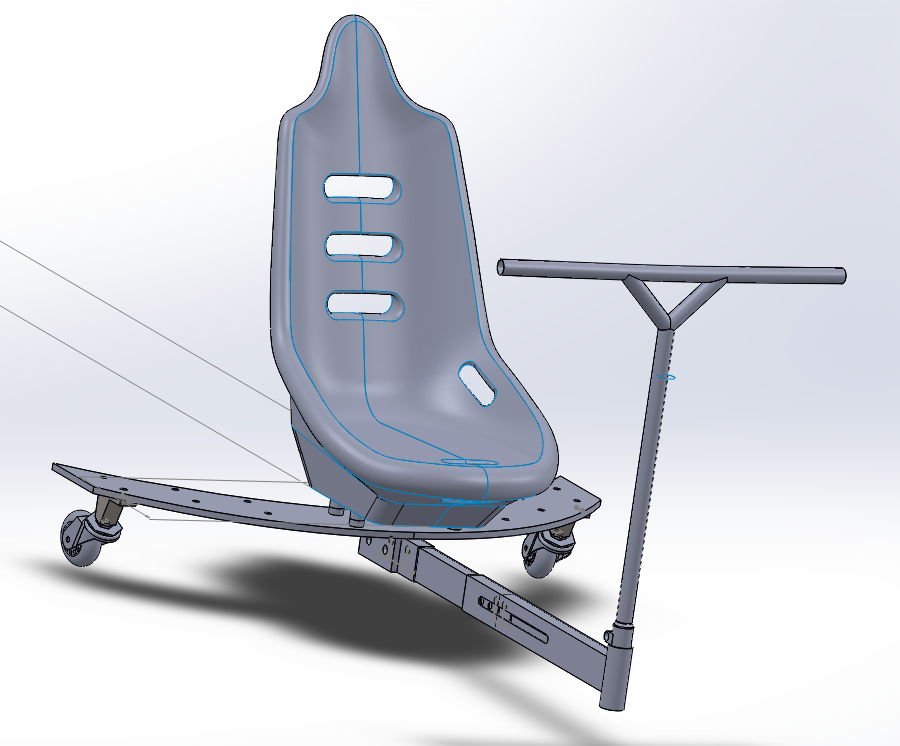Mobi Glider S14
Abstract
Design and develop a toy for handicapped children that are immobile from the waste down.
Team members
- Justin Marek
- Rob McCarter
- Josh Wyatt
- Aarol Bright
- Ethan Jones
Problem Statement/overview of the need
Our Goal is to create a mobility toy for children aged 6-12 or 12-18 who are paralyzed from the waste down. Due the lack of market consisting of handicap capable mobility equipment that is fun and can be used by all ages we are attempting to provide this new innovative toy. The equipment that is available now doesn't stimulate the paralyzed portion of the body therefore our design in going to incorporate this.
Design Specifications
Frame
- Frame adjustability to compensate for a wider variety;
- Age, Height, arm and leg length
Handlebars
- Handlebars need to be made for application and fit in a comfortable manner.
- Needs to have adjustability and possible different styles for looks
casters and rear frame
- Casters larger than 3 inch for proportional movement.
- Minimum rear end width (caster to caster) of 19 inch.
seat
- Indented line Seat inclined at 15 degrees mounted a minimum of 2 inches off off frame for brackets.
- Indented line Must conform to the body of specified age group (6-12) or (12-18)
Leg Support
- Indented line Fixtures for legs must place the riders legs and ankles in a comfortable position
- Indented line Must be secure with a form of straps IE; velcro or snaps.
Conceptual Design
Summarize your conceptual design process. Develop at least three concepts.
Design Concept 1
Design Concept 2
Design Concept 3
Evaluate concepts/select candidate
| Ease of mobility | Manufactureability | Safety | Adjustability | Total | |
|---|---|---|---|---|---|
| Concept 1 | Very easy to move 5/5 | For the size this machine was intended for, all that has to be manufactured is leg braces and braking system 2/5 | unable to stop without the addition of brakes 4/5 | Adjustability requires major dimension change for different age groups 1/5 | 11/20 |
| Concept 2 | relatively easy to move with abs 4/5 | Very simple with the only requirement being addition of a seat and leg braces 4/5 | Low center of gravity with almost no chance of falling or tipping 5/5 | With telescoping main frame machine is adjustable for multiple ages with ease 5/5 | 18/20 |
| Concept 3 | relatively easy to move 4/5 | Simple design with only addition being raised seat and leg braces 3/5 | Higher center of gravity means the machine will be prone to more tipping similar to concept 1 3/5 | With telescoping main frame machine is adjustable for multiple ages with ease 5/5 | 15/20 |
Based off these qualifications design concept 2 will be chosen as the main design subject for the Mobi Glider project.
Detailed Design
This section will describe a detailed design process
Description of selected design
Design of Mobi Glider
- Mobi Glider will be a machine where a paraplegic kid or young adult (ages 6-16) can use his/her abs to cause a "wiggle" and make the machine move forward while maintaining a safe speed. It will consist of the following engineered functions.
- Telescoping frame for adjustability of ages
- Different handlebar options for different desired styles.
- Leg supports and straps
- Low center of gravity to eliminate possibility of tipping.
- Larger casters to produce more and easier motion
Detailed description of selected design
Analysis
We met with Melissa Draper to get a few kids to ride the Mobi Glider. It was very apparent that kids with special needs absolutely loved to ride it. It also came to our attention that many children with learning disabilities such as A.D.D. or A.D.H.D or Autism for that matter have a hard time with repetitive motions. The main function of our design to make it move is a side to side motion that has to be repeated if you want to go anywhere. This repetitive motion concept would help our design be very popular in special needs programs or for schools.
Kinematics of Castor wheels
Rear view of castor wheels in motion
stress analysis of base plate
Transverse Shear Stress
Results & Changes to be made
- Based off of the results from the solidworks analysis we found that the factor of saftey of the 3/8 inch thick peice of aluminum is 8 @ 130 lbs. A factor of safety of 1.5 or 2 will be more desired for weight savings. From the equation;
Factor of safety = Tfail / Tallow and the work shown above we can determine that a aluminum plate with a thickness of 1/8 inch will reduce the weight by over half. Based off the second analysis done the factor of safety of the 1/8th inch aluminum was 1.455 so for a 130 lb rider the 1/8th inch aluminum will do fine. With the addition of 2 inner castors factor of safety goes up to around 20 so we can determine that if weight of the rider is an issue extra castors can be added to compensate the weight.
Ergonomic analysis
Analysis of the comfort of the components.
- Seat is low to the ground minimizing safety hazards and slightly leaned back for comfort
- Arms strait out front
- Legs slightly bent and sitting on foot pegs (final design will have leg supports on the outside of legs to hold them together)
- To accommodate different sizes the main shaft will telescope out and in to adjust seat distance
- We may make the handlebar telescope up and down also for easy adjustment
CAD Drawings
Adjustable Testing plate to determine how the castor acts as the overall width (castor to castor) increases.
Castor bracket for adjustable plate
Lower mobiglider frame (no wings, no telescoping)
adjustable frame lower assembly
wheels and Castors
Final Cad Drawings
Files File:Mobiglider.zip
Bill of parts
| QTY | ITEM | DESCRIPTION | SOURCE | PART # | COST per ITEM (QTY:1) |
|---|---|---|---|---|---|
| 2 | Rip Rider 360 Rear Wheel | Larger Castors | razor.com | W20036540048 | $23.99 |
| 1 | Razor® A & A2 Kick Scooter 98mm Wheels | Larger front wheel | razor.com | 134932-RD | $15.99 |
| 2 | Razor PowerWing | Trike with castors | Wal-Mart | 20036058 | $35.00 |
| 1 | Custom Rear Wing | Custom aluminum wing created for testing | Bennet Industries | N/A | $78.25 |
| 2 | Custom Castor Mounts | Allow castor location to be adjusted | Bennet Industries | N/A | $60.00 |
| 1 | Labor | Drilled holes and seat mounts on custom rear wing | Bennet Industries | N/A | $60.00 |
| 2 | Custom Leg Braces | Front mounted leg supports with straps for the rider | Rob's Custom's | N/A | $135.00 |
| 1 | RipRider 360 | Big Wheel Trike with rear mounted castors | Innovations.com | 20036542 | $85.99 |
Assembly Instructions
Fabrication Process
Insert pictures of fabrication process
Photos of Completed design
Insert pictures of the final product
Instructions for safe use
Do not use the device unless supervised by an adult that has been fully understood the safe use of this product.
Summary and Conclusions
In conclusion, I would consider the Mobi Glider a huge success. Our project was a little different in that it was a little more open ended and there were several different directions we could have taken the project in. In the end, we ended up deciding to do more experimental work to prove that the design would function the way we intended rather than building another glider. Our main reason for doing this was that we wanted to be sure that it would work for someone with lower body immobility since that was our original focus of our project. After we built the prototype it worked exceptionally well and we believe there would be a significant market for this as a regular toy for any children. We all rode it and were able to successfully conclude that it is in fact very easy to make it move forward without using any leg strength at all. The only concern we had was that it does require some core body strength so someone who can only use their arms will not be able to use it which limits it to people with limited lower body mobility but not persons who are fully paralyzed any higher than the waist. The upside of this is that it does provide a good core body workout which could be very beneficial to someone who otherwise only uses their arms in a wheelchair. One unintended but very positive result we received was that the special education teacher at one of the schools we tested it at loved the glider because it was a fun and healthy repetitive motion, which she explained to us is something that is a very common symptom of autism. Many autistic children practice unhealthy repetitive behaviors such as nail biting, teeth grinding, or even as sever as head banging. She was very excited about the mobi glider because the repetitive motion of riding it could be used to help replace the urge to practice more negative repetitive behaviors. To continue developing this project the next step would be to find a specific child with lower body mobility to model the final prototype after. We would need to address issues of installing the leg braces (which we already have they just aren't installed), making the seat location and leg braces as comfortable and aesthetically appealing as possible, and then building the final prototype which would include permanent and possibly adjustable leg braces, shortening the excess length of the back wing so no extra material is sticking out, installing a small wheelie bar so there is no chance of overturning backwards, and finally painting the glider to prepare it to market. With the information on this page and the materials with the glider this should be a very simple task for another group to finish if they so desire, or they could pursue the idea of leaving it in the setup we have now and marketing it as a toy for children that could be especially helpful to children with autism who have urges to practice negative repetitive behaviors.
